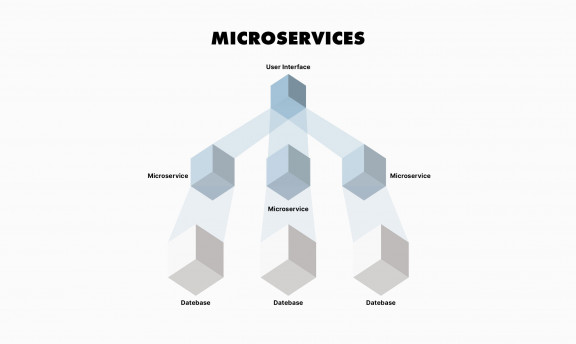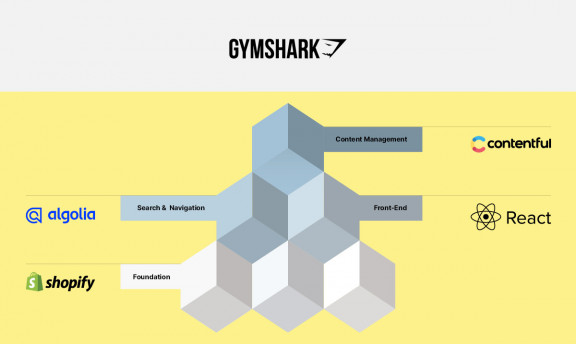
5 brands' composable success stories
Flexibility; agility; innovation; speed to market: just some of the attributes digital retailers want from their eCommerce solutions to help them navigate today’s evolving digital landscape.
The pandemic shone a spotlight on the major issues some brands had with adapting quickly to market change. Others, have realised that an outdated infrastructure struggles to support their vision, goals and needs any longer.
Step forward, composable architecture – a system that allows businesses to build flexible and resilient tech solutions from interchangeable ‘building blocks.’
One of the ways businesses are moving towards a composable future is by adopting a MACH set-up – which stands for Microservices, API-led, Cloud-based and Headless. In effect, following this path allows brands to build modular, scalable systems that best suit their individual needs and development better.
Here, SQLI takes a look at five brands to have gone down the composable route – and what it has meant to their business.
From zero to hero: how composable strategies boosted sales
-
PUMA
Tasked with transforming the digital fortunes of PUMA, Dylan Valade, Head of Global E-Commerce Technology, Puma Group, highlighted several key areas to improve: the need to manage content better; improve site speed; increase the speed of the user experience and prepare for a mobile app.
Executing new ideas quickly, soon became central to the sport brand’s digital vision, meaning composable commerce made perfect sense.
In an interview on the Bold Commerce podcast, Dylan explained: “We realised that to take the easy road or the less expensive, faster path, we just could not get to where we were trying to.
“The way I look at this now is when we want to ask for a change, by the time we are all finished talking about it and people have got a cup of coffee, it's on its way to production. We were nowhere near that two years ago.”
The company’s composable journey began with the implementation of Salesforce Reference Architecture on Commerce Cloud, before moving to an API-first front-end for Magento. Last year, the brand launched a headless React front-end with GraphQL API management and headless content management system running on Salesforce Commerce Cloud. This infrastructure was also used to launch the React Native PUMA App in multiple markets.
-
LEGO
With LEGO famous across the world for its building blocks, it’s apt the company opted for a similar set-up when it came to its digital infrastructure.
Issues with reliability and scalability had hampered the brand’s existing platform performance, so it moved to a MACH-based philosophy. This provided the brand with more control over its tech, but also allowed the addition of interactive games to the site. Its huge team of developers are now able to test new channels and ideas more quickly.
Its e-Commerce site went down during the UK and US launch of a particular Star Wars set in 2017, managing seven orders per second. With the MACH-based solution in place, the brand launched one hundred new products and saw huge spikes in traffic, but processed an incredible two thousand orders per minute.
-
GYMSHARK
After initially working from a garage in 2012, sportswear brand Gymshark has gone on to major global success – valued at £1.25bn by the Sunday Times last year.
However, in 2015 the company found its all-in-one e-Commerce solution was struggling to cope with traffic spikes.
The brand re-focussed its tech, adopting a composable MACH stack using Shopify as the foundation, with Algolio for search and navigation, Contentful for content management and React as the front-end.
The changes helped increase conversion rates from 6.2 per cent to 10 per cent and led to four times the revenue from search users.
-
AMAZON
New feature releases proved difficult to develop quickly on Amazon’s early monolithic solution.
In 2002, it determined that the main issue surrounded the ‘tight coupling of components and the interdependence of development groups,’ which involved ‘complex team co-ordination and extensive, time-consuming, and tedious regression testing every time the company released a new version of the website or deployed a fix to resolve an issue.’
Amazon opted for an API-first web design approach and in 2006 launched Amazon Web Services, encouraging a modern approach to architecture that included microservices and APIs which helped the brand’s digital stores evolve more rapidly and enhanced the shopper experience.
Amazon’s move to a composable MACH set-up, has seen it grow from strength-to-strength, with the company hitting £514billion US dollars in net sales revenue globally, in 2022.
-
RIVER ISLAND
The original River Island monolithic commerce solution relied heavily on third party developers, which slowed innovation.
In 2020, the fashion brand turned to MACH architecture to gain greater control and improve content and personalisation for customers.
This has led to greater flexibility in choosing partnerships that better fit the needs of the business and consumer, while enabling it to make faster feature changes.
The success of the implementation saw turnover at River Island increase by 23.2% year-on-year to £740m, at the end of 2021.
It also enabled the brand to improve its omnichannel approach, which recently included the implementation of self-service kiosks in physical stores, with the technology integrated with the commerce platform.
Why your business should consider going composable
Customer expectations and shopping habits have changed dramatically over the past decade. Today’s consumers expect the same quick, seamless, multi-channel experience at every touchpoint.
For many businesses, traditional all-in-one solutions offer everything they need at an affordable price.
However, many brands, including some mentioned above, are moving to composable MACH-based solutions offering the flexibility they need to make faster decisions, quicker feature developments and more dynamic, personalised experiences for customers.




